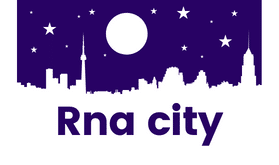The world of spirits and beverages has seen a paradigm shift over the years. The UK, in particular, has seen an explosion of craft distilleries, each striving to create unique, high-quality beverages that entice the discerning consumer. This growth in the distillery industry, while exciting, poses unique challenges for brands aiming to stand out in a crowded market. The battlefield is no longer limited to the quality of whiskey, gin, or other spirits a brand can produce. The onus now lies on how differently and effectively they can market themselves.
The Crowded Market Scene
The craft distillery industry in the UK has been growing exponentially. This boom in the industry is a clear indication of consumers’ evolving tastes and their desire to explore premium, handcrafted spirits. The shift from mass-produced alcoholic beverages to small-batch, artisanal spirits has resulted in a crowded marketplace, teeming with brands vying for consumer attention.
This might interest you : How Can UK Gourmet Food Shops Leverage Content Marketing to Drive Online Sales?
The market’s crowded nature presents a significant challenge for craft distilleries. With so many brands in the fray, standing out and making an impact becomes a daunting task. It’s no longer sufficient to produce high-quality spirits. The real battle lies in strategic branding that triggers consumer interest and loyalty.
Distinguishing the Brand
In a saturated market, the need for craft distilleries to distinguish their brand becomes paramount. The challenge here is twofold: creating a unique brand identity and communicating it effectively to consumers.
In parallel : What Are the Strategies for Post-Brexit Trade Diversification for UK SMEs?
Where premium craft spirits were once a novelty, they’ve now become the norm, and brands need to go beyond just selling a product. They need to sell an experience that resonates with their target audience. For instance, whiskey brands might want to emphasize their unique distilling process, the rich history behind their brand, or their commitment to sustainability.
The way a brand communicates its unique selling proposition (USP) to consumers is equally important. In an age of digital marketing, distilleries need to be savvy in their use of social media, online advertising, and content marketing. Effectively harnessing these channels can help craft distilleries reach a wider audience and build a strong brand presence.
Understanding Consumer Preferences
Another challenge for craft distilleries in the UK market is understanding and catering to consumer preferences. The consumer base for spirits and alcoholic beverages is diverse, with varying tastes and preferences. Moreover, trends in this industry are ever-evolving and staying attuned to these changes is crucial for brands.
Craft distilleries need to continually innovate and adapt their offerings to meet consumers’ changing tastes. For instance, the recent trend toward low-alcohol and non-alcoholic beverages has seen distilleries creating ‘spirits’ with lower alcohol content. Similarly, the rise in conscious consumerism has led to an increased demand for sustainably produced spirits.
Navigating Distribution and Trade Regulations
Distribution and trade regulations further add to the challenges faced by craft distilleries. The spirits industry in the UK is highly regulated, with stringent rules regarding the production, marketing, and sale of alcoholic beverages. This can limit a brand’s ability to market their product effectively and reach a wider consumer base.
Trade regulations also pose a challenge for craft distilleries looking to expand their market beyond the UK. Each country has its own set of rules regarding the import and sale of spirits, and navigating these can be complex and time-consuming.
The Price Competition
The final challenge lies in pricing. While consumers are willing to pay a premium for craft spirits, price competition from mass-produced brands remains a significant hurdle. These brands, with their larger scale of production, can offer their products at lower prices, creating a price war that smaller craft distilleries may find difficult to win.
Craft distilleries need to strike a balance between pricing their product competitively and ensuring they cover their production costs. This is particularly challenging given the higher costs associated with handcrafting spirits in smaller batches.
In conclusion, the crowded UK market and the challenges it presents require craft distilleries to be innovative and strategic in their branding efforts. They need to distinguish their brand, understand consumer preferences, navigate trade and distribution regulations, and compete on price to gain a foothold in this competitive market.
Navigating the Global Spirits Market
As the world of spirits continues to grow, craft distilleries in the UK must also keep an eye on the global market. This includes key regions like North America, Asia Pacific, South America and the Middle East. Each of these regions has its own unique set of challenges and opportunities.
The North American market, for instance, has a large consumer base with a growing interest in craft spirits. Successful market entry here could mean a substantial increase in sales and brand visibility. However, this requires understanding the market’s specific tastes and preferences, as well as navigating its complex distribution channels.
The Asia Pacific region, on the other hand, poses a different challenge. Here, the spirits market is dominated by local brands, making it harder for foreign craft distilleries to penetrate. However, the rising middle class in this region has shown an increased interest in premium, high-quality spirits, opening up potential opportunities for craft distilleries with the right branding and marketing strategy.
Craft distilleries also need to consider the potential of emerging markets in South America and the Middle East. These markets, while smaller than North America and Asia Pacific, offer potential for growth with the right market segmentation and supply chain strategies.
Competing with Major Companies
Another unique challenge for craft distilleries is competing with major companies such as William Grant and Pernod Ricard. These companies have a larger scale of production, allowing them to offer high-quality spirits at a lower price point. Additionally, they have a strong brand presence and a well-established distribution network, making it hard for smaller distilleries to compete.
However, craft distilleries can leverage their uniqueness and authenticity to compete. This could mean highlighting their handcrafted process, their story, or their commitment to sustainability – aspects that major companies often can’t match. Social media can be a powerful tool in this regard, allowing craft distilleries to connect directly with consumers and build a loyal community around their brand.
Conclusion
The UK craft spirits market is undoubtedly crowded, challenging craft distilleries to stand out and stay competitive. Navigating the global spirit market, understanding regional preferences, competing with major companies, and staying on top of evolving consumer trends are all part of the game.
But with the right strategies – from innovative branding and effective use of social media to understanding market segmentation and managing supply chain – craft distilleries can carve out a successful niche for themselves. The Irish whiskey industry, for instance, has seen a notable resurgence due to its unique branding and high-quality product offering.
Ultimately, in this competitive landscape, it’s not just about the product. It’s about the brand, the story, and the experience. And craft distilleries, with their unique offerings and authentic stories, are well-positioned to make an impact in the spirits market.











